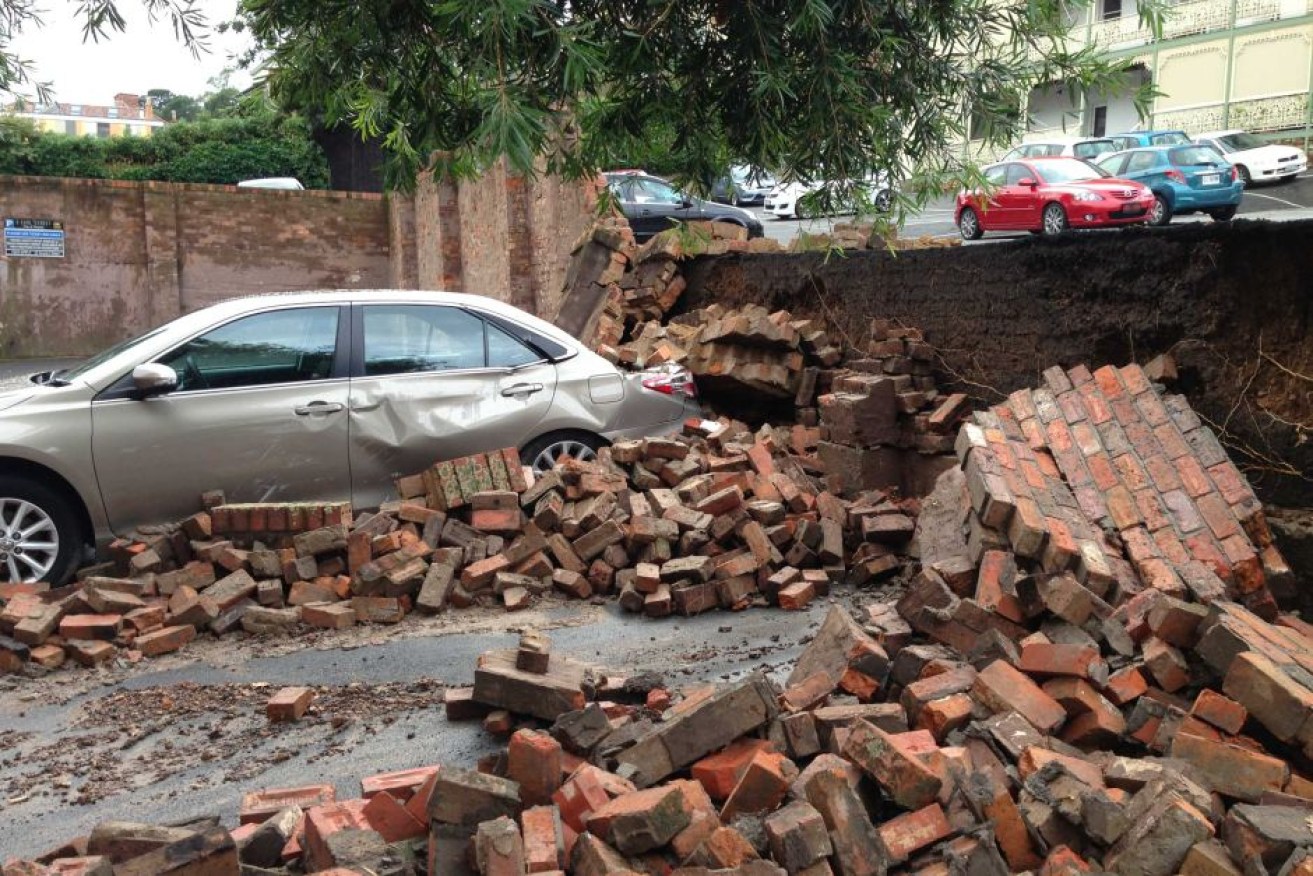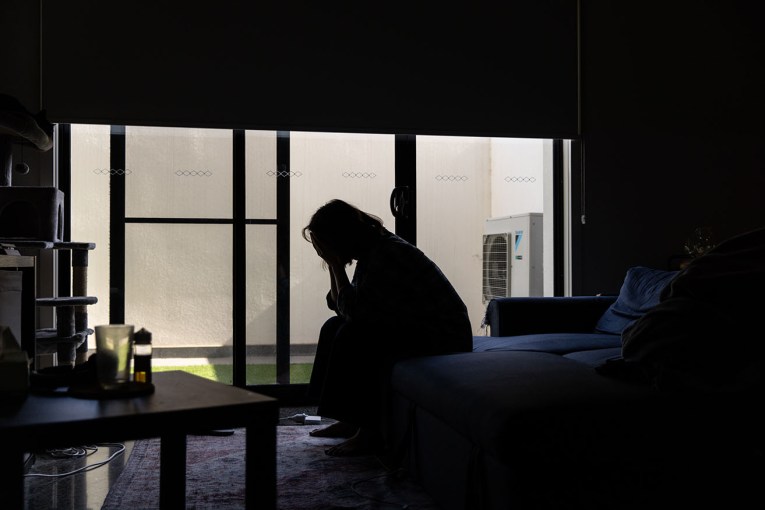Man dead, homes destroyed as severe weather lashes Australia

ABC
Severe weather fronts are lashing several regions of Australia, with a man dying after being swept away by floodwaters in Queensland and a “mini-tornado” destroying several homes in New South Wales.
The Bureau of Meteorology (BoM) said a unique set of weather patterns were responsible for the nation-wide wet weather event, not expected to be repeated anytime soon.
“It’s quite unusual to see this sort of pattern develop right across that broad section of states,” BoM meteorologist Craig Burke told the ABC.
• Pilbara lashed by Stan
• Zika: 700,000 cases expected
• Aussie tourists urged to avoid these countries
“It is unlikely we would see the same extent again like what we have seen in the past few days.
“This was a unique weather set up.”
In Western Australia, Tropical Cyclone Stan brought strong winds and heavy rain to the Pilbara, while a weak monsoon has arrived in the Top End.
Meanwhile, a man was killed near Bundaberg in southern Queensland after his car was washed away by floodwaters, just moments after he let his brother out to check on water levels.

Swollen from heavy rain, Bundaberg Creek cuts off a path in Baldwin Swamp Environment Park in Bundaberg. Photo: Twitter: Christina Ongley
Swiftwater rescue crews in the region rescued several other people, including a woman and her children, and a man who had abandoned his car and was found clinging to a tree.
In south-east NSW, destructive winds during thunderstorms destroyed several homes at Forbes Creek, about an hour east of Canberra.
The Hoskingtown-Rossi Rural Fire Brigade (RFS) said a “mini-tornado” hit the town, however a BoM forecaster was unable to confirm any tornado activity in the area.
Bungendore SES incident controller Peter Adrian said a strip of land in the area about 200 metres wide by about three kilometres was badly affected by the storm.
“It looks like a cyclonic-type wind went through there somewhere before midnight … there’s at least four houses with roof damage, or roofs actually lifted off them and internal walls collapsed,” he said.
Mr Adrian said in one instance the roof of a home had been “relocated from the house into the middle of the road”.
Storms also wreaked havoc on Sydney and other parts of New South Wales on Saturday, with major roads flooded and power out several regions.
Red alert still stands after Tropical Cyclone Stan
In WA’s north-west Pilbara region, where Tropical Cyclone Stan crossed on Sunday morning, a red alert still stands for people between Port Hedland and Wallal, including Pardoo, Eighty Mile, Wallal and Marble Bar.

A satellite image of Cyclone Stan off the coast of Western Australia on January 30. Photo: Supplied: Landgate/Himawari
Stan, which is now at a category one level, is not expected to directly hit populated areas, but residents are on alert for strong winds, heavy rains and dangerous storm tides, especially near the cyclone’s centre.
Grant Brooks, whose son is the manager at Limestone Station, located 10 kilometres east of Marble Bar, said he was not too concerned about the approaching storm.
“So far so good, lots of puddles around outside and not as much wind as I would have expected at this stage,” he said.
“I’ve had a couple of contingency plans just in case it got really nasty so no real worries.”
Mr Brooks said he was thankful for the rain Cyclone Stan had brought.
In the Northern Territory, a weak monsoon has causing numerous road closures in Darwin and dumped up to 100 millimetres of rain in some areas.
Meanwhile Tasmanians still cleaning up after damaging heavy rain two days ago have been spared from predicted further rain.
South Australia and Victoria were also hit by storms on Saturday , that cut power to homes and businesses and caused flash flooding in some areas.
Humid weather, rain to continue across Australia
Hot and humid days are expected to continue across the country as the aftermath of Cyclone Stan brings heavy rains to the interior of Western Australia and western parts of South Australia.

A brick wall has collapsed on a car outside a Launceston hotel, Tasmania after heavy rain on January 28. Photo: ABC
Mr Burke said a band of showers and storms were still affecting Tasmania through the Bass Strait and into central Victoria on Sunday.
He said while Cyclone Stan was expected to be reclassified as an ex-Tropical Cyclone, the aftermath of the system would bring heavy rain through the interior of Western Australia and eastern parts of South Australia.
A number of flood watch warnings are currently in place for areas such as Pilbara in Western Australia and the west coast and north-west pastural districts of South Australia, where 60 to 100 millimetres of rain is expected to fall within the next 12 hours.
The wet weather from the western parts of Australia could drag across to the east coast, but the modelling still remains unclear, Mr Burke said.
He said the weather would be “unsettled” in northern Australia and the eastern areas of Queensland with showers and storms as the low trough heads out to the Tasman.
“It is not unusual to see high humidity levels in northern Australia, but certainly for Victoria and Tasmania, they would expect a more dry heat at this time of year, so it’s been a unique few days for all of Australia,” Mr Burke said.








